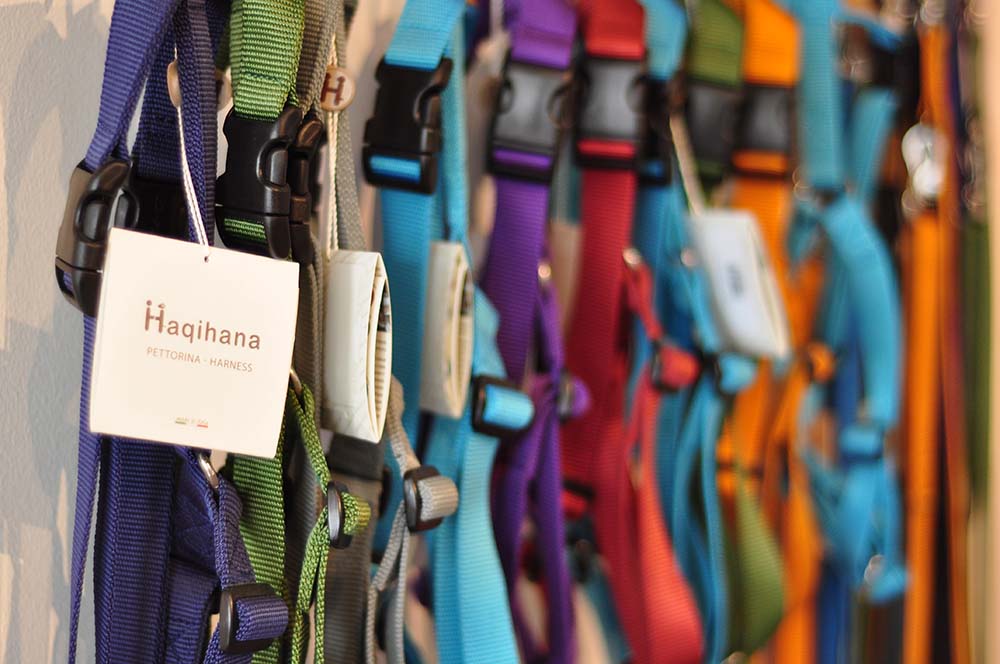
Invest in a great-fitting harness
Need help finding the right harness? Call or come into the store. We're always happy to help!

It’s no secret that here at Wholesome Canine, we're big proponents of a good harness. We know that a well designed, quality harness is vital to protecting your dog’s neck. Damage and injury from constant collar pressure is common, and often times missed by owners. In recent years the number of people switching from a collar to a harness for walks has definitely increased. And while it’s great to see so many more dogs wearing harnesses, it’s important to know they’re not all created equal. Some harnesses on the market today may even be causing physical harm to your dog! We need to understand what makes a good harness so we can choose the best one for them.
Some of the most popular brands are marketed as “no-pull” harnesses. While these harnesses do in fact prevent dogs from pulling, they do so by restricting movement (not because the dog has learned how to walk nicely on leash). The fact is that many of these harnesses (especially the ones with the strap that crosses the chest) can be physically damaging to dogs over time.
The Jena Dog Locomotion study was conducted between 2006-2010 and its research provided some revolutionary insights into the movement and gait of dogs. During this study it was discovered that the pivot point in a dog’s front extremity is located in the upper part of the shoulder blade and not the shoulder joint as previously thought by many in the veterinary community. This proves vitally important when looking at the impact of chest strap harnesses on a dog’s physical wellbeing:
"During forward movement, a harness with a horizontal strap is similarly restrictive for the dog as a rubber band around our upper arms would be for us humans. The physiological movement of the front extremity is inhibited in the dog. Just as a rubber band inhibits our physiological arm movement."
The results of this study are detailed in the book “Dogs in Motion” by Dr. Martin S. Fischer and Dr. Karin E. Lilje. One of the conclusions they came to is that a good harness should not restrict or hinder the shoulder blade or chest. These vital areas need to be able to move freely and naturally.
